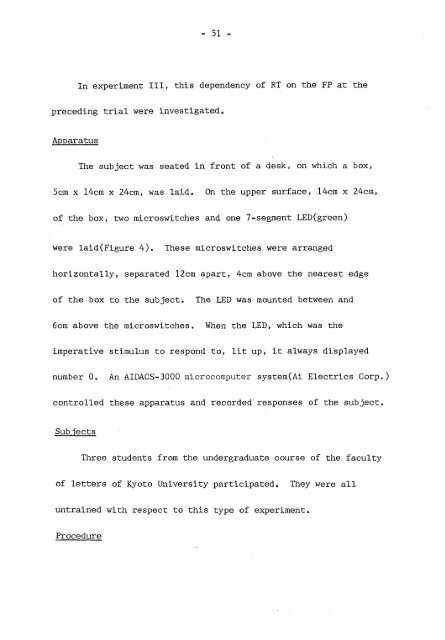A two-state model of simple reaction time
A two-state model of simple reaction time
A two-state model of simple reaction time
You also want an ePaper? Increase the reach of your titles
YUMPU automatically turns print PDFs into web optimized ePapers that Google loves.
- 51 -<br />
In experiment III, this dependency <strong>of</strong> RT on the FP at the<br />
preceding trial were investigated.<br />
Apparatus<br />
The subject was seated in front <strong>of</strong> a desk, on which a box,<br />
Scm x 14cm x 24cm, was laid. On the upper surface, 14cm x 24cm,<br />
<strong>of</strong> the box, <strong>two</strong> microswitches and one 7-segment LED(green)<br />
were laid(Figure 4). These microswitches were arranged<br />
horizontally, separated 12cm apart, 4cm above the nearest edge<br />
<strong>of</strong> the box to the subject. The LED was mounted between and<br />
6cm above the microswitches. When the LED, which was the<br />
imperative stimulus to respond to, lit up, it always displayed<br />
number O. An AIDACS-3000 microcomputer system(Ai Electrics Corp.)<br />
controlled these apparatus and recorded l responses <strong>of</strong> the subject.<br />
Subjects<br />
Three students from the undergraduate course <strong>of</strong> the faculty<br />
<strong>of</strong> letters <strong>of</strong> Kyoto University participated. They were all<br />
untrained with respect to this type <strong>of</strong> experiment.<br />
Procedure

















